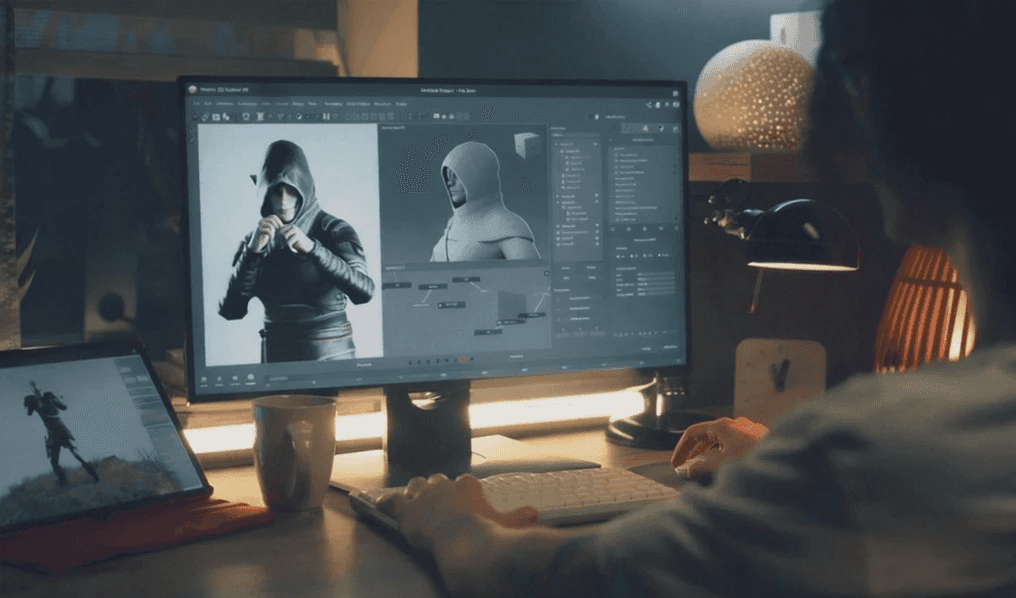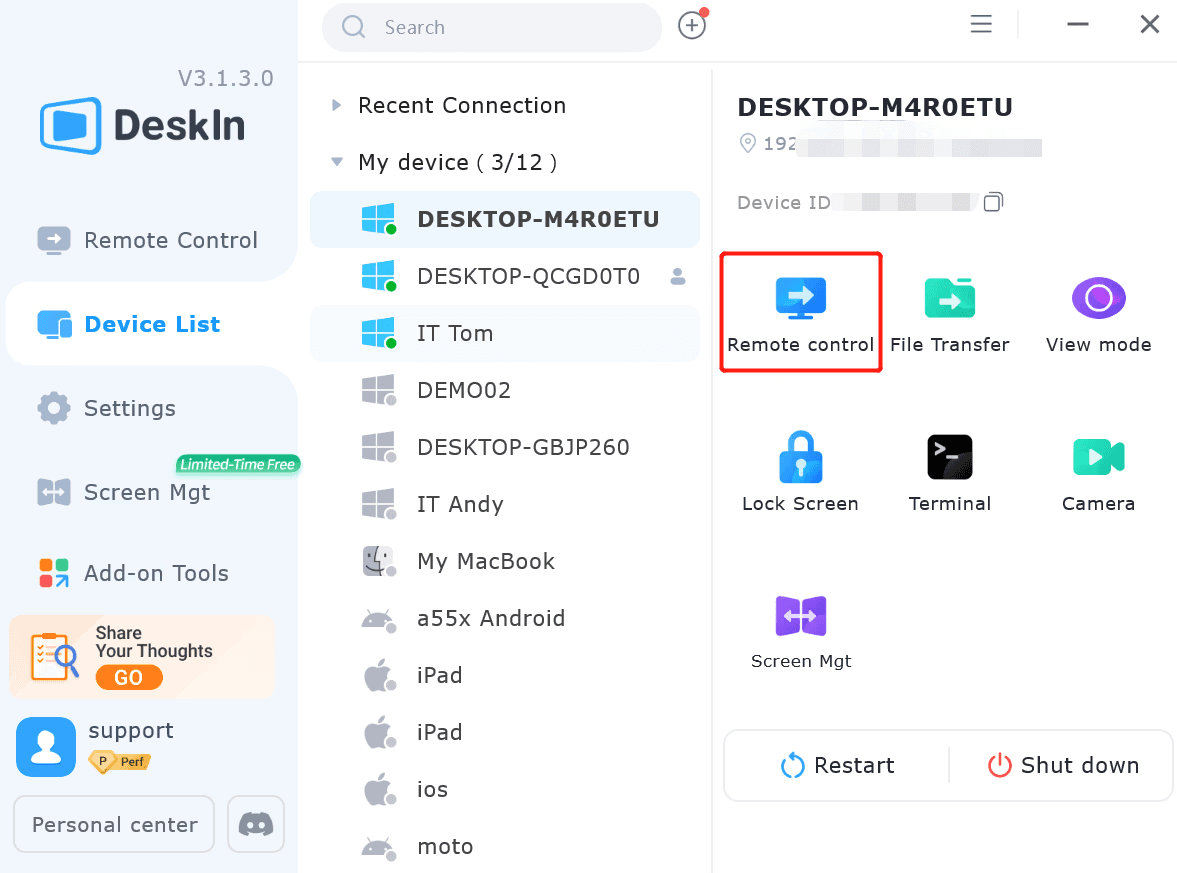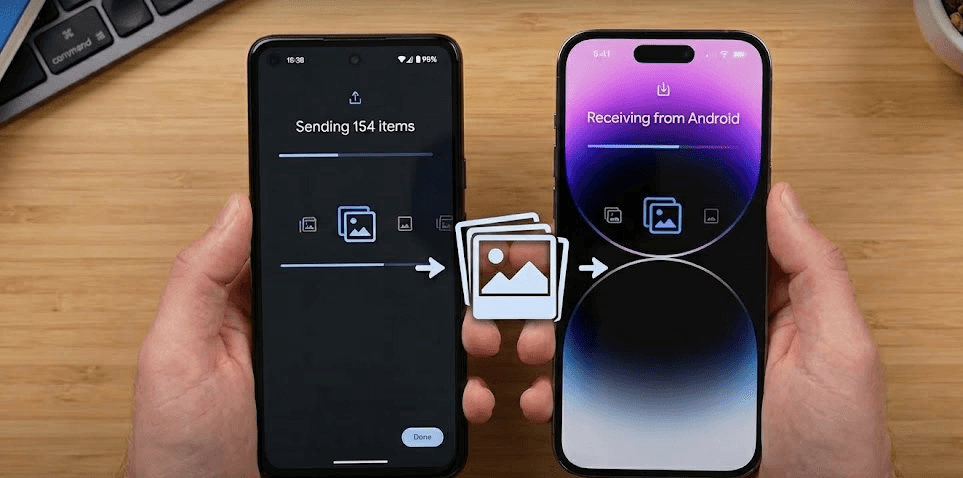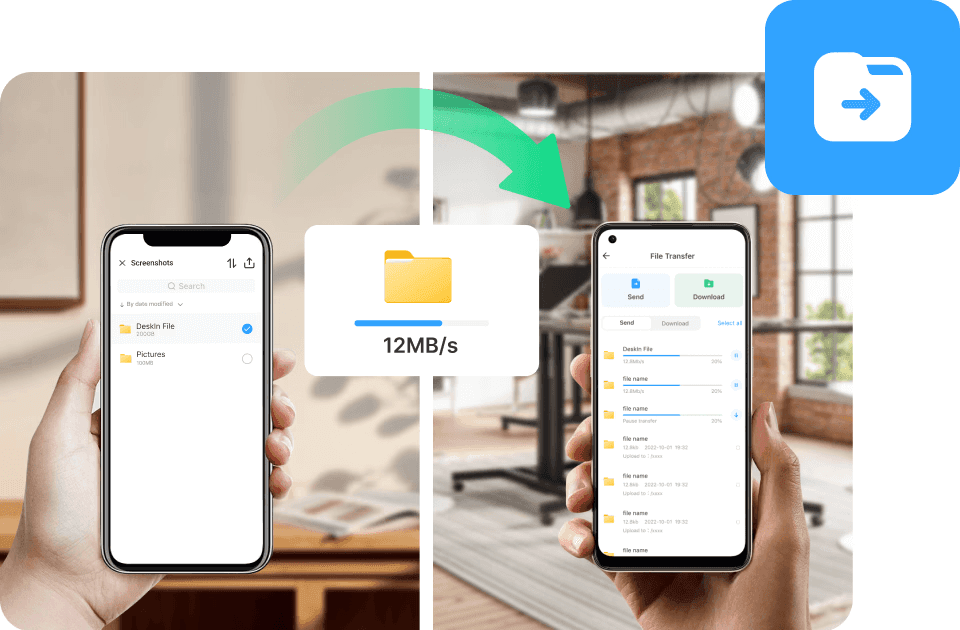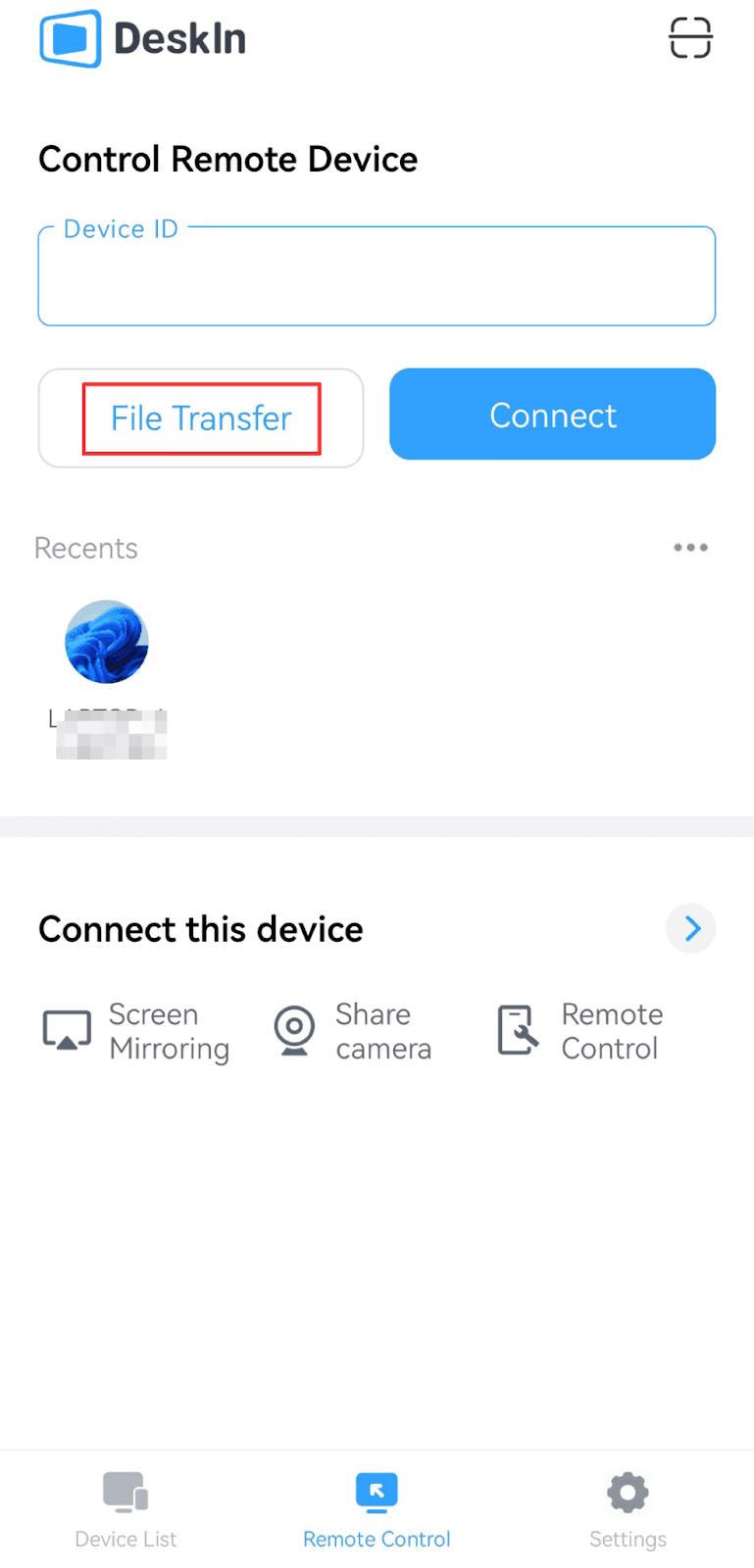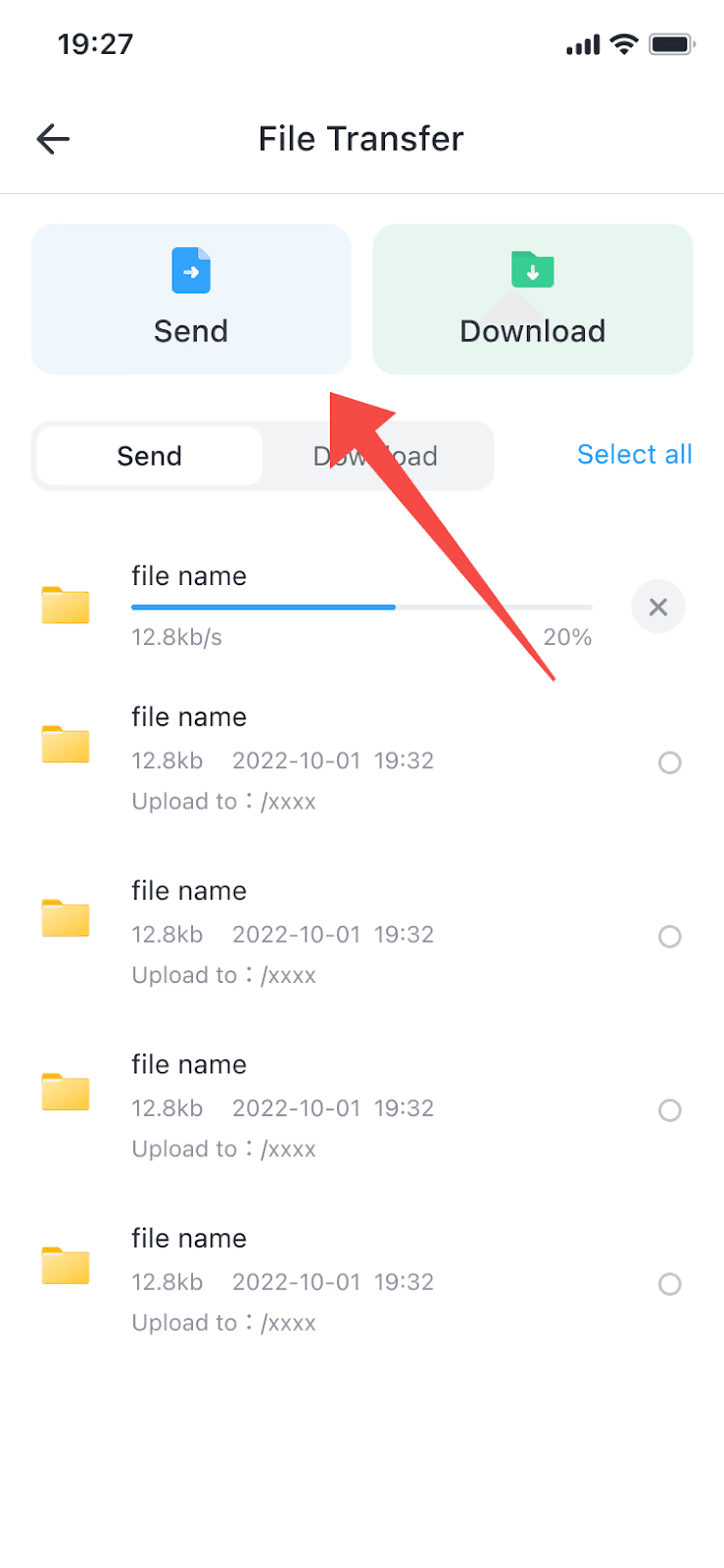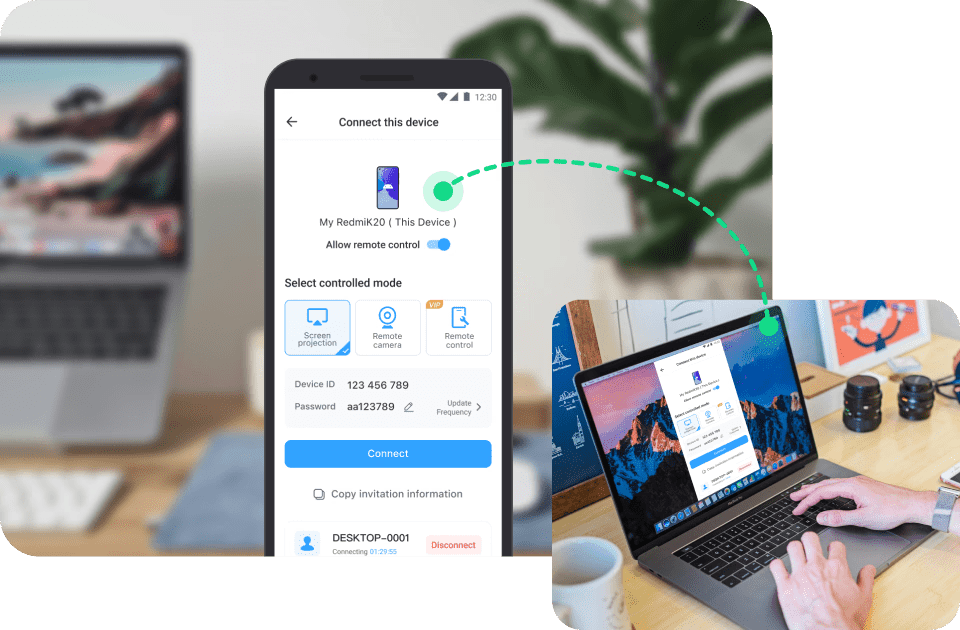很多人在用過 Teamviewer 和 Anydesk 後發現并不太適合自己,或是功能無法滿足需求,或是價格太高,或是連線品質不夠。如果你也正在尋找 TeamViewer 或 AnyDesk 的替代工具,本文將向你介紹DeskIn 遠端桌面,並説明爲什麽它是比TeamViewer 和 AnyDesk 更好的遠端解決方案。繼續往下看吧!
TeamViewer 和 AnyDesk 哪裡不夠好?為何用戶尋找替代方案?
TeamViewer 和 AnyDesk 的用户,有使用免費版本用來臨時遠端存取和輕辦公的個人,也有用於管理協作和為客戶提供技術支援的付費企业。作爲有較高知名度和口碑的產品,為什麼越來越多人想換掉 TeamViewer 和 AnyDesk,尋找替代品呢?以下幾個可能是主要原因,看看你是否有遇到過:
1、高串流時的連線表現一般
Anydesk 和 Teamviewer 在全球都有伺服器,連線穩定性不錯,免費版也基本可滿足輕辦公需求。但對於設計、剪輯、遊戲等清晰度和串流要求較高的遠端作業,卡頓、模糊等情況嚴重,體驗差異很大。
另外 Teamviewer 經常誤判商業用途,Anydesk 免費版的1個小時連線時長限制和廣告,都影響了使用者的體驗進而希望尋找其他解決方案。
📖你可能感興趣:爲什麽DeskIn 串流表現優於 TeamViewer 和 AnyDesk?
最穩定、低延遲的遠端軟體DeskIn:網路智慧導航技術帶來流暢使用體驗
2、價格高,免費版無客服支援
TeamViewer 和 AnyDesk 的免費版都不可商用,且無客服支援,使用頻率高的個人或企業需要選擇價格非常高的付費版本。
針對個人使用者,TeamViewer 和 AnyDesk 都有提供個人版,價格相仿約23美金/月,只能按年訂閲,對於普通用家試錯成本較高。平替DeskIn的標準版只需要9.9美金/月,按年訂閲更低至4.2美金/月,所含權益都有覆蓋。這也是個人使用者要尋找 TeamViewer 和 AnyDesk替代品的原因。
而對於企業使用者,Teamviewer 和 Anydesk 的方案都更偏向「大型企業」,無論是多達500的管理裝置,還是高達2000美元/年的價格,對於「中小型企業」都是一種負擔,以致他們傾向性價比更高,更合適他們的解決方案。
3、適用場景少,行動裝置版體驗不好
Teamviewer 和 Anydesk 都較注重在「遠端辦公」和「遠端支援」場景下「桌面端」的使用。卻忽略了使用者越來越多的「行動裝置」使用需求,比如在手機遠端PC電腦玩遊戲,把iPad用作電腦的延伸螢幕等等。不僅缺少一些配套的支援功能,他們的手機版本也不太好用。
相比之下,DeskInsui的App版本則更加直覺和順手,4:4:4的真彩色編碼也讓它成爲最適合遠端設計的軟體,也有專門針對「辦公」、「遊戲」、「設計」的解決方案和連線模式上,滿足使用者更好場景的需求,也讓他成爲用戶在尋找TeamViewer 和 AnyDesk替代方案時的首選。

TeamViewer 和 AnyDesk 的最佳替代品:DeskIn遠端軟體
在尋找TeamViewer 和 AnyDesk 的替代方式時,一款連線品質好、功能豐富又兼具性價比的遠程軟體是最終目標,而DeskIn遠端桌面就是這個最佳替代方案。DeskIn支援在Windows、Mac、Android、iOS上跨系統使用,全球200+伺服器以及自研網路優化技術讓他的連線穩定流暢,無限時、無廣告、免費可商用還有客服支援。加上豐富的功能以及合理的方案組合,不管是想要免費使用的「個人」,預算較少的「中小型團隊」,還是對安全和管理要求更高的「企業使用者」,都能找到滿意的解決方案,價格還超佛心!
💻立即下載DeskIn遠端桌面!
DeskIn 成爲 TeamViewer 和 AnyDesk 最佳替代品的原因
連線穩定快速:無連線時長限制無廣告,自動選擇最佳線路,保持順暢不掉線,檔案傳輸速度高達12MB/S
高串流時畫質幀率依舊出色:DeskIn支援最高4K60fps/2K144FPS,還有4:4:4色彩編碼。4K品質下仍維持低於40ms,高幀率,畫面清晰不卡頓無撕裂感。
介面直覺,使用者友好:DeskIn的主介面設計簡單、直覺,小白也能很快上手。行動端除了虛擬滑鼠,還有内建快捷按鍵,一鍵就能完成複製、粘貼、叫出工作視窗等。
免費版可商用,提供客服支援:DeskIn的免費版就支援管理3台裝置,不僅可商用,還提供多種客服支援管道,遇到問題超快解決。
更合理的版本,更佛心的價格:DeskIn的3個付費方案根據使用情景設計,個人和不同規模的企業用家都能找到價格合理又滿足需求的解決方案。
豐富進階功能:除了基礎遠端連線功能,DeskIn還提供語音通話,白板標注等免費語音協作功能;遊戲鍵盤、3D遊戲等遠端遊戲配套;延伸螢幕、掃碼投影等螢幕管理功能,為多場景使用提供一站式解決方案。
安全度高:作爲 TeamViewer 和 AnyDesk 的替代方案,DeskIn同樣使用256位元編碼技術,還有多種安全設定如新裝置驗證、黑白名單、隱私螢幕、鎖客戶端等,安全性完全不輸。
「DeskIn個人版」用戶口碑超好:可以取代 Teamviewer 和 Anydesk
很多使用者在從 Teamviewer 和 Anydesk 改用 DeskIn 之後體驗感都非常好。使用個人版方案的「Althamas Karani」稱DeskIn為最好的Anydesk替代方案,UI解決而且有很多獨家功能。

評測博主「吸貓君」在實測 DeskIn 之後,也給出了很高的評價,認爲DeskIn在延遲度上優於Teamviewer 很多,甚至可以取代 Teamviewer 和 Anydesk。

「DeskIn企業版」幫助企業客戶走出困境,擴展生意
除了個人使用者,DeskIn 也為很多「中小型」甚至「大型」知名企業提供解決方案,他們也曾使用Awesun、Anydesk、Teamviewer 並苦於尋找更好的替代方案,在轉向使用 DeskIn 之後獲得良好的體驗,並助力他們的生意和企業管理效率提升,一起看看DeskIn如何幫助客戶生意獲得成功:
DeskIn使用案例1:為沃爾瑪實現分布式遠程辦公高效管理
企業規模:大型企業,知名連鎖商超
解決方案:
沃爾瑪在疫情期間面臨大量員工需遠距辦公、個人裝置效能不足與資料不齊全等問題。傳統VPN+RDP連線不穩定、操作複雜,其他遠端軟體則存在卡頓、安全隱患與界面不友好等困擾。DeskIn「企業版」憑藉其高清穩定的連線、便捷的設備綁定、細緻的權限控制和完善的日誌記錄,有效提升異地管理效率,保障項目如期推進。即使在疫情後,沃爾瑪也持續用於混合辦公與差旅支援。點擊查看客戶成功故事。
DeskIn使用案例2:為Ennead 建築設計事務提供遠端設計解決方案
企業規模:中型企業,知名建築設計公司
解決方案:
Ennead 繼續高效能的遠端解決方案滿足遠端設計需求,尤其是高效能運算及專業設計軟體的使用。DeskIn 「企業版」,憑藉其一鍵部署、支援繪圖板與4K 解析、真色彩模式、多螢幕操作及多人同時連線等功能,成功實現高效、安全且穩定的遠端繪圖與審圖流程,大幅提升團隊跨地區協作效率達2倍以上。點擊查看客戶成功故事。
DeskIn使用案例3:幫助小型廣告公司實現透明化管理,擴展客戶
企業規模:3小型團隊
解決方案:一家只有 3 名員工的台灣在地數位廣告公司,員工遠端管理多個海外客戶廣告賬號。透過DeskIn「性能版」和額外通道,客戶可以即時透明地了解廣告活動情況,提升效率和客戶信任度,也幫助他們擴展業務規模,達到50位用戶。負責人表示他們也曾使用 AnyViewer、TeamViewer 和 Awesun,但一直飽受延遲和不穩定的困擾想要尋找替代品,而DeskIn 是他們覺得最合適的解決方案。
💻立即下載DeskIn遠端桌面,提升你的生意!
如何選擇 DeskIn 方案?
在你從 TeamViewer 和 AnyDesk 轉向使用 DeskIn 之後,該怎麽選擇方案呢?以下爲你説明。作爲TeamViewer 和 AnyDesk 的平替,除免費版本外,DeskIn也有「個人版」和「企業版」:
免費版:適合使用頻率不高的個人使用者,輕辦公,對畫質、速度五特殊要求
標準版:適合裝置較多或希望提升遠端體驗的個人和小型團隊。企業用於客戶支援場景的建議搭配多通道插件
遊戲版:兼具遊戲和辦公功能,適合有遠端遊戲需求的使用者。
性能版:適合對畫質要求高和設計工作者、工程師、自由職業者。中小型團隊可搭配多通道插件用於商業用途。
企業版:適合對員工管理、安全性要求較高,或有客製化需求的中大型企業。
💻點擊查看DeskIn遠端桌面解決方案!

結論:即刻開始使用更好的遠端工具DeskIn
透過以上的内容,相信你已經知道 DeskIn 是一款高清低延,多功能的遠端桌面控制應用程序,為「個人」和「企業」使用者提供完美解決方案,絕對是是更可靠的TeamViewer 和 AnyDesk 替代品。想要獲得更好的遠端體驗或提升你的生意?簡單幾步,立即開始使用DeskIn遠端桌面:
前往官網,在您的裝置上下載DeskIn遠端桌面,注冊一個免費賬戶並登入。
在主控裝置上輸入被控制的裝置的ID,使用密碼連線或免密連線方式連線。
等待幾秒后,您就可以無縫順暢地控制遠端裝置了。
若你對方案選擇或功能有疑惑,隨時咨詢DeskIn客戶服務團隊!
很多人在用過 Teamviewer 和 Anydesk 後發現并不太適合自己,或是功能無法滿足需求,或是價格太高,或是連線品質不夠。如果你也正在尋找 TeamViewer 或 AnyDesk 的替代工具,本文將向你介紹DeskIn 遠端桌面,並説明爲什麽它是比TeamViewer 和 AnyDesk 更好的遠端解決方案。繼續往下看吧!
TeamViewer 和 AnyDesk 哪裡不夠好?為何用戶尋找替代方案?
TeamViewer 和 AnyDesk 的用户,有使用免費版本用來臨時遠端存取和輕辦公的個人,也有用於管理協作和為客戶提供技術支援的付費企业。作爲有較高知名度和口碑的產品,為什麼越來越多人想換掉 TeamViewer 和 AnyDesk,尋找替代品呢?以下幾個可能是主要原因,看看你是否有遇到過:
1、高串流時的連線表現一般
Anydesk 和 Teamviewer 在全球都有伺服器,連線穩定性不錯,免費版也基本可滿足輕辦公需求。但對於設計、剪輯、遊戲等清晰度和串流要求較高的遠端作業,卡頓、模糊等情況嚴重,體驗差異很大。
另外 Teamviewer 經常誤判商業用途,Anydesk 免費版的1個小時連線時長限制和廣告,都影響了使用者的體驗進而希望尋找其他解決方案。
📖你可能感興趣:爲什麽DeskIn 串流表現優於 TeamViewer 和 AnyDesk?
最穩定、低延遲的遠端軟體DeskIn:網路智慧導航技術帶來流暢使用體驗
2、價格高,免費版無客服支援
TeamViewer 和 AnyDesk 的免費版都不可商用,且無客服支援,使用頻率高的個人或企業需要選擇價格非常高的付費版本。
針對個人使用者,TeamViewer 和 AnyDesk 都有提供個人版,價格相仿約23美金/月,只能按年訂閲,對於普通用家試錯成本較高。平替DeskIn的標準版只需要9.9美金/月,按年訂閲更低至4.2美金/月,所含權益都有覆蓋。這也是個人使用者要尋找 TeamViewer 和 AnyDesk替代品的原因。
而對於企業使用者,Teamviewer 和 Anydesk 的方案都更偏向「大型企業」,無論是多達500的管理裝置,還是高達2000美元/年的價格,對於「中小型企業」都是一種負擔,以致他們傾向性價比更高,更合適他們的解決方案。
3、適用場景少,行動裝置版體驗不好
Teamviewer 和 Anydesk 都較注重在「遠端辦公」和「遠端支援」場景下「桌面端」的使用。卻忽略了使用者越來越多的「行動裝置」使用需求,比如在手機遠端PC電腦玩遊戲,把iPad用作電腦的延伸螢幕等等。不僅缺少一些配套的支援功能,他們的手機版本也不太好用。
相比之下,DeskInsui的App版本則更加直覺和順手,4:4:4的真彩色編碼也讓它成爲最適合遠端設計的軟體,也有專門針對「辦公」、「遊戲」、「設計」的解決方案和連線模式上,滿足使用者更好場景的需求,也讓他成爲用戶在尋找TeamViewer 和 AnyDesk替代方案時的首選。

TeamViewer 和 AnyDesk 的最佳替代品:DeskIn遠端軟體
在尋找TeamViewer 和 AnyDesk 的替代方式時,一款連線品質好、功能豐富又兼具性價比的遠程軟體是最終目標,而DeskIn遠端桌面就是這個最佳替代方案。DeskIn支援在Windows、Mac、Android、iOS上跨系統使用,全球200+伺服器以及自研網路優化技術讓他的連線穩定流暢,無限時、無廣告、免費可商用還有客服支援。加上豐富的功能以及合理的方案組合,不管是想要免費使用的「個人」,預算較少的「中小型團隊」,還是對安全和管理要求更高的「企業使用者」,都能找到滿意的解決方案,價格還超佛心!
💻立即下載DeskIn遠端桌面!
DeskIn 成爲 TeamViewer 和 AnyDesk 最佳替代品的原因
連線穩定快速:無連線時長限制無廣告,自動選擇最佳線路,保持順暢不掉線,檔案傳輸速度高達12MB/S
高串流時畫質幀率依舊出色:DeskIn支援最高4K60fps/2K144FPS,還有4:4:4色彩編碼。4K品質下仍維持低於40ms,高幀率,畫面清晰不卡頓無撕裂感。
介面直覺,使用者友好:DeskIn的主介面設計簡單、直覺,小白也能很快上手。行動端除了虛擬滑鼠,還有内建快捷按鍵,一鍵就能完成複製、粘貼、叫出工作視窗等。
免費版可商用,提供客服支援:DeskIn的免費版就支援管理3台裝置,不僅可商用,還提供多種客服支援管道,遇到問題超快解決。
更合理的版本,更佛心的價格:DeskIn的3個付費方案根據使用情景設計,個人和不同規模的企業用家都能找到價格合理又滿足需求的解決方案。
豐富進階功能:除了基礎遠端連線功能,DeskIn還提供語音通話,白板標注等免費語音協作功能;遊戲鍵盤、3D遊戲等遠端遊戲配套;延伸螢幕、掃碼投影等螢幕管理功能,為多場景使用提供一站式解決方案。
安全度高:作爲 TeamViewer 和 AnyDesk 的替代方案,DeskIn同樣使用256位元編碼技術,還有多種安全設定如新裝置驗證、黑白名單、隱私螢幕、鎖客戶端等,安全性完全不輸。
「DeskIn個人版」用戶口碑超好:可以取代 Teamviewer 和 Anydesk
很多使用者在從 Teamviewer 和 Anydesk 改用 DeskIn 之後體驗感都非常好。使用個人版方案的「Althamas Karani」稱DeskIn為最好的Anydesk替代方案,UI解決而且有很多獨家功能。

評測博主「吸貓君」在實測 DeskIn 之後,也給出了很高的評價,認爲DeskIn在延遲度上優於Teamviewer 很多,甚至可以取代 Teamviewer 和 Anydesk。

「DeskIn企業版」幫助企業客戶走出困境,擴展生意
除了個人使用者,DeskIn 也為很多「中小型」甚至「大型」知名企業提供解決方案,他們也曾使用Awesun、Anydesk、Teamviewer 並苦於尋找更好的替代方案,在轉向使用 DeskIn 之後獲得良好的體驗,並助力他們的生意和企業管理效率提升,一起看看DeskIn如何幫助客戶生意獲得成功:
DeskIn使用案例1:為沃爾瑪實現分布式遠程辦公高效管理
企業規模:大型企業,知名連鎖商超
解決方案:
沃爾瑪在疫情期間面臨大量員工需遠距辦公、個人裝置效能不足與資料不齊全等問題。傳統VPN+RDP連線不穩定、操作複雜,其他遠端軟體則存在卡頓、安全隱患與界面不友好等困擾。DeskIn「企業版」憑藉其高清穩定的連線、便捷的設備綁定、細緻的權限控制和完善的日誌記錄,有效提升異地管理效率,保障項目如期推進。即使在疫情後,沃爾瑪也持續用於混合辦公與差旅支援。點擊查看客戶成功故事。
DeskIn使用案例2:為Ennead 建築設計事務提供遠端設計解決方案
企業規模:中型企業,知名建築設計公司
解決方案:
Ennead 繼續高效能的遠端解決方案滿足遠端設計需求,尤其是高效能運算及專業設計軟體的使用。DeskIn 「企業版」,憑藉其一鍵部署、支援繪圖板與4K 解析、真色彩模式、多螢幕操作及多人同時連線等功能,成功實現高效、安全且穩定的遠端繪圖與審圖流程,大幅提升團隊跨地區協作效率達2倍以上。點擊查看客戶成功故事。
DeskIn使用案例3:幫助小型廣告公司實現透明化管理,擴展客戶
企業規模:3小型團隊
解決方案:一家只有 3 名員工的台灣在地數位廣告公司,員工遠端管理多個海外客戶廣告賬號。透過DeskIn「性能版」和額外通道,客戶可以即時透明地了解廣告活動情況,提升效率和客戶信任度,也幫助他們擴展業務規模,達到50位用戶。負責人表示他們也曾使用 AnyViewer、TeamViewer 和 Awesun,但一直飽受延遲和不穩定的困擾想要尋找替代品,而DeskIn 是他們覺得最合適的解決方案。
💻立即下載DeskIn遠端桌面,提升你的生意!
如何選擇 DeskIn 方案?
在你從 TeamViewer 和 AnyDesk 轉向使用 DeskIn 之後,該怎麽選擇方案呢?以下爲你説明。作爲TeamViewer 和 AnyDesk 的平替,除免費版本外,DeskIn也有「個人版」和「企業版」:
免費版:適合使用頻率不高的個人使用者,輕辦公,對畫質、速度五特殊要求
標準版:適合裝置較多或希望提升遠端體驗的個人和小型團隊。企業用於客戶支援場景的建議搭配多通道插件
遊戲版:兼具遊戲和辦公功能,適合有遠端遊戲需求的使用者。
性能版:適合對畫質要求高和設計工作者、工程師、自由職業者。中小型團隊可搭配多通道插件用於商業用途。
企業版:適合對員工管理、安全性要求較高,或有客製化需求的中大型企業。
💻點擊查看DeskIn遠端桌面解決方案!

結論:即刻開始使用更好的遠端工具DeskIn
透過以上的内容,相信你已經知道 DeskIn 是一款高清低延,多功能的遠端桌面控制應用程序,為「個人」和「企業」使用者提供完美解決方案,絕對是是更可靠的TeamViewer 和 AnyDesk 替代品。想要獲得更好的遠端體驗或提升你的生意?簡單幾步,立即開始使用DeskIn遠端桌面:
前往官網,在您的裝置上下載DeskIn遠端桌面,注冊一個免費賬戶並登入。
在主控裝置上輸入被控制的裝置的ID,使用密碼連線或免密連線方式連線。
等待幾秒后,您就可以無縫順暢地控制遠端裝置了。
若你對方案選擇或功能有疑惑,隨時咨詢DeskIn客戶服務團隊!






